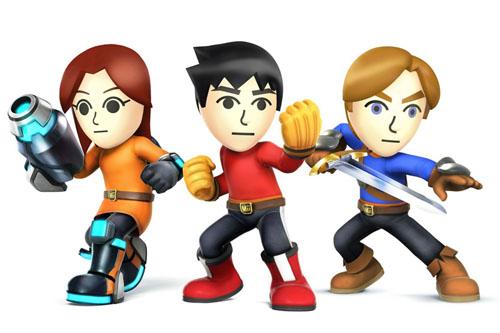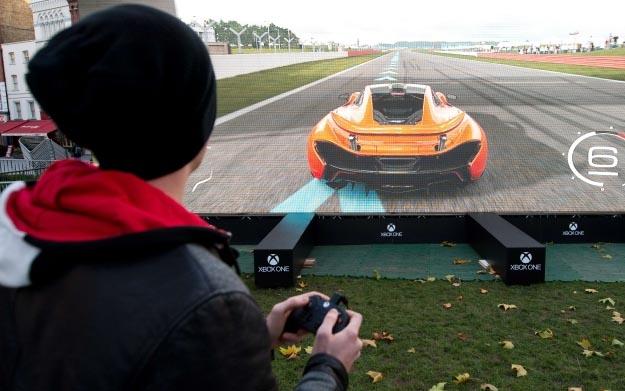You are here
Nintendo finally pulls the trigger on first mobile game
By Los Angeles Times (TNS) - Nov 03,2015 - Last updated at Nov 03,2015

Nintendo’s customisable Mii avatars take centre stage in its first smartphone game — Miitomo (Photo courtesy of Nintendo)
Nintendo is finally making the move into smartphone gaming, figuring it’s better late than never.
The Japanese electronics maker — one of the world’s biggest video game companies but a virtual nonentity in the rapidly growing mobile games industry — unveiled its first title for smartphones last week in Tokyo.
“Miitomo”, which is set to be released in the spring of next year, is a game that allows players to create avatars to interact with one another socially. The game is the first of five mobile apps Nintendo plans to launch by March 2017, including one that may feature the iconic “Super Mario”, the company said at an investor briefing in Tokyo.
The long-overdue move is an effort to tap into the lucrative and cutthroat world of mobile games that has exploded with the proliferation of smartphones and tablets. Chances are, at one time or another, you were secretly obsessed with “Angry Birds” or “Candy Crush”. Even Kim Kardashian scored big when she launched “Kim Kardashian: Hollywood” last year, with the addictive mobile game raking in $1.6 million in its first five days.
This year marks the first time mobile gaming revenue will exceed console gaming revenue globally, at $30 billion versus $27 billion, according to video game market research firm Newzoo.
Nintendo’s popular franchises, which include “Super Mario” and “Zelda”, “have the potential to be a billion-dollar business on mobile alone,” said Peter Warman, Newzoo’s co-founder and chief executive.
“Unbelievable that it has taken so long for Nintendo,” he said. “They had to see Apple, Google, King and Supercell surpass them in terms of 2014 game revenues to take action towards mobile. However, it never is too late because smartphone and tablet gaming is here to stay.”
Nintendo first announced its entry into smartphone games in March, partnering with Tokyo Internet firm DeNA.
“Both companies will develop and operate new game apps based on Nintendo’s (intellectual property), including its iconic game characters, for smart devices,” DeNA said in a statement at the time.
“The alliance is intended to complement Nintendo’s dedicated video game systems business and extend Nintendo’s reach into the vast market of smart device users worldwide.”
Once the unequivocal leader in video games, Nintendo today is facing threats from several directions.
Its troubles began when casual gamers who enjoyed Nintendo’s family friendly titles migrated from home and hand-held game consoles to mobile devices, where they found similar games made by rival developers, often available free.
At the same time, consoles like the PlayStation and Xbox started serving hardcore gamers with graphically rich titles, many highlighted by heart-pounding violence.
Complicating matters for Nintendo was the saturation of the global console market. It didn’t help that consoles never made inroads in China and other regions.
As such, the Kyoto company has experienced steep declines in console sales in recent years.
In 2008, no home video game console was more popular than the Nintendo Wii, with 24.19 million units sold. By 2014, only 530,000 of them were sold, fewer than the Xbox One, Xbox 360, PlayStation 3 and PlayStation 4, according to data website Statista.
Nintendo’s latest console, the Wii U, was a dud, selling about 10 million units its first three years. Even its hand-held 3DS has seen sales dip from 12.56 million units in 2011, its launch year, to 9.97 million in 2014.
Meanwhile, sales of Sony’s PlayStation 4, a more powerful gaming console, nearly doubled to 13.92 million units in 2014 from 2013.
By turning its focus to smartphones, Nintendo is relying less on its console business while capitalising on the near ubiquity of smartphones.
But unlike Sega, which ditched its Genesis console to focus on games, Nintendo isn’t abandoning consoles.
Ideally, the move into mobile games satisfies longtime customers while enticing new ones to the Nintendo brand, which might in turn lead them to buy Nintendo’s consoles. The company also is working on a secretive new platform code-named NX.
The problem with chasing its target audience to mobile is that the smartphone gaming market has become crowded with competitors, and Nintendo is relegated to playing catch-up.
Warman said the annual growth rate for mobile games in the US has slipped over the last few years from more than 60 per cent to just over 10 per cent. The good news for Nintendo is that emerging markets are embracing mobile games.
“Top global game franchises generate $1 billion-plus per year. Examples being ‘Candy Crush’, ‘Clash of Clans’, ‘Call of Duty’, ‘GTA’. ‘Mario’ is in the same league and has the potential to generate $500 million-plus on mobile alone,” he said. “I am very happy that Nintendo has woken up to the real world.”
All of Nintendo’s intellectual property would be eligible for development under the alliance, and that only new, original games optimised for smartphones would be created, “rather than porting games created specifically for the Wii U home console or the Nintendo 3DS portable system,” DeNA said.
The companies also said they would build an online membership service for consumers that would be accessible from smart devices, PCs and Nintendo consoles.
Nintendo’s first mobile game will be free to download but include in-app purchases.
A paid game, which usually costs 99 cents to a few bucks, would have provided a short-term boost in revenue. But a free game means more downloads, and therefore, more user data. That gives Nintendo time to analyse how well the game works, tweak it and develop ways to maximise in-app purchases, Warman said.
Whether the apps lead gamers to buy Nintendo’s consoles is uncertain.
Michael Pachter, an analyst at Wedbush Securities, said the explosion of mobile games was aided by cheaper cellphone data plans. That lured users away from Nintendo’s hand-held consoles onto smartphones and tablets, creating an expectation that video games would be cheap or free; after all, only a small percentage of people pay for in-game features.
“I don’t know if the free-to-play audience is interested in spending $150 on a device and another $40 to $50 on a game,” Pachter said.
Despite its woes, Nintendo still boasts loyal fans.
Samantha O’Neil — better known as NintendoFanGirl to her 61,000 YouTube subscribers — said a mobile game would be a welcome addition to the company’s storied line-up.
No matter what the game is, she said, “I’ll buy it out of the gate.”
Related Articles
For almost as long as there have been computers, there have been people intent in playing games with them.
Muscular new consoles from Microsoft and Sony are girding to battle for the throne of the video game industry at the E3 extravaganza set to kick off in Los Angeles on Tuesday.
PARIS — Japanese electronics giant Sony is set to celebrate 30 years since it launched the PlayStation console, the little grey box that cat













